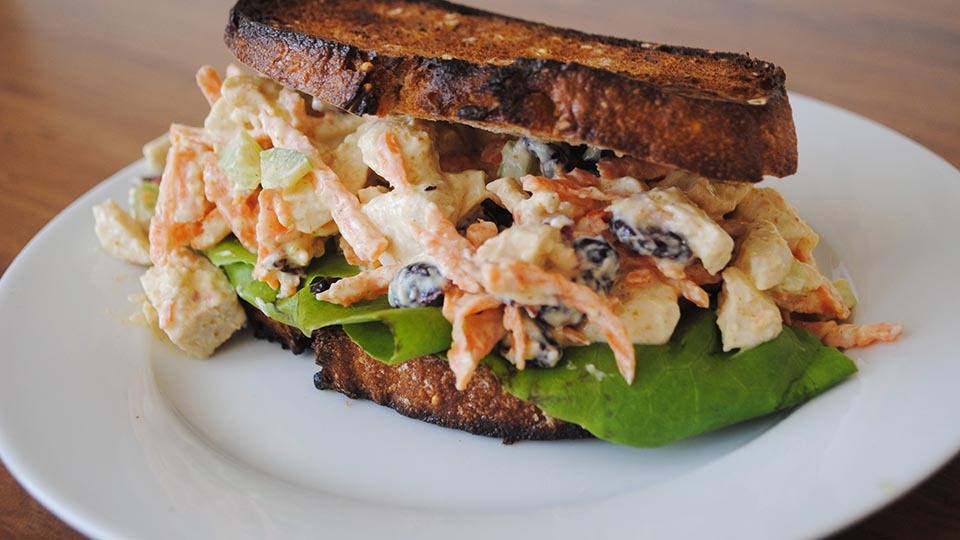Learning to Listen to Hunger and Fullness Cues

External vs. Internal Eating Cues

Have you ever stopped to think about how many decisions around food and eating we make each day? Each day, we are inundated with external eating cues, or environmental triggers, that can influence what we eat and how much we eat. For instance, portion sizes may influence the amount of food we believe is appropriate to eat and eating while distracted may influence how much we consume.
In contrast to external eating cues, our bodies possess internal cues, such as hunger and fullness signals, that can guide us to eat the foods our bodies need in the appropriate quantity. People who use internal signals stop eating when they experience the feeling of fullness or they no longer experience hun
As we get older, many other external factors influence eating, which may cause us to disconnect from our internal signals. Eating disinhibition is a term that refers to this disconnection from our bodies’ needs, which can prompt eating due to the presence of food, outside of hunger; eating in response to unpleasant feelings; or regularly eating past the point of fullness (French, Epstein, Blundell, & Wardle, 2012).ger. They also may make adjustments to eating, such as stopping eating before completely full if they plan to eat dessert.
Tuning into Internal Signals for Eating
The concept of Intuitive Eating, developed by Elise Resch and Evelyn Tribole, includes 10 principles for rediscovering the ability to eat according to internal cues (Tribole & Resch, 2012). This article focuses on two of the principles: eating in response to physical hunger and stopping when physically full or satiated (Tribole & Resch, 2012). Research indicates that there are many benefits to using internal signals of hunger and fullness to guide eating. The ability to use hunger and fullness cues has been shown to be moderately related to fewer disordered eating symptoms, greater body positivity, higher self-esteem, and maintaining a healthier weight (Tylka & Kroon Van Diest, 2013; Wansink et al., 2007). The information below reviews five steps for relearning how to listen to hunger and fullness cues.
Relearn to Listen to Hunger and Fullness
- Pay attention to eating. The first step to listening to hunger and fullness cues may be to remove distractions and pay attention to the process of eating. Mindful eating is paying attention to the process of eating in the present moment with full awareness (Tribole, 2010). In order to be able to detect hunger and fullness signals, we have to pay attention to the process of eating, the experience, and our bodies’ sensations.
- Start to identify physical hunger signals. According to Tribole and Resch (2012), there are many factors that impair our ability to detect hunger which include the following:
- following external diets, which tell us what to eat and when, rather than teaching us to use our own internal cues to guide eating;
- being constantly busy, which may cause us to miss detecting our hunger signals; and
- consuming diet sodas, coffee, and other calorie free foods that fill up our stomachs without providing energy.
In order to identify sensations of hunger before eating, you can ask yourself: “how hungry am I?” or “how do I know I am hungry?” (Tribole & Resch, 2012).
Signs of physical hunger may vary different for different people. Hunger may manifest in any of the following ways:
- stomach rumbling or growling;
- feeling light-headed or faint;
- having trouble focusing on a task; and
- head or stomach hurting (Tribole & Resch, 2012).
- Identify other types of hunger. As you start trying to identify physical hunger, there may be times when none of the physical symptoms are present, but you still have the urge to eat. These urges may come from other types of “hunger” that are not physical. According to May (2010), if the hunger is not physical, no amount of food is going to satisfy the hunger. Two other types of hunger include the following:
Environmental or Mental Hunger
This type of hunger may be in response to the sight or smell of food or due to a special occasion (Tribole & Resch, 2012). For example, people often eat cake at a wedding as part of the celebration, even if they are not physically hungry (Tribole & Resch, 2012). It is important to note that everyone eats for these reasons occasionally; it can be completely normal and healthy (Tribole & Resch, 2012). However, mental hunger can be problematic when it is in response to everyday environmental cues such as the sight of restaurants or advertisements, social situations, or other triggers (May & Fletcher, 2012). According to May and Fletcher (2012), it is important to become aware of triggers for eating so we can decide how we want to respond to them, rather than reacting out of habit.
Emotional Hunger
Hunger we feel as a result of experiencing negative emotions such as loneliness, anger, or sadness, stress, anxiety, or boredom, in the absence of physical hunger, is emotional hunger (Tribole & Resch, 2012; May & Fletcher, 2012). Most people eat for emotional reasons at one time or another; however, emotional eating becomes problematic when it is a main source of coping (May & Fletcher, 2012). It can be important to find other healthier ways to find comfort and relief other than through food (May & Fletcher, 2012).
Hunger we feel as a result of experiencing negative emotions such as loneliness, anger, or sadness, stress, anxiety, or boredom, in the absence of physical hunger, is emotional hunger (Tribole & Resch, 2012; May & Fletcher, 2012). Most people eat for emotional reasons at one time or another; however, emotional eating becomes problematic when it is a main source of coping (May & Fletcher, 2012). It can be important to find other healthier ways to find comfort and relief other than through food (May & Fletcher, 2012).
- Identify sensations of fullness. The following strategies may help identify feelings of fullness:
- eat slowly to allow time to experience the sensation of becoming full;
- put your fork or spoon down between bites to slow the eating process;
- portion your food out by splitting it in half or into thirds and check in with your fullness level before you move to the next section;
- check in regularly to see how your stomach feels; and
- assess your energy level; food should make you more energetic rather than tired (May & Fletcher, 2012).
- Use a numerical scale to monitor hunger and fullness before and after. Tribole & Resch (2012) recommend using a scale to rate hunger prior to eating and fullness after eating in order to determine what level of hunger and fullness feels comfortable and satisfying for you. Eating is not a standardized process. Instead it is a personal experience, so the scale will work differently for different people. In general, the numbers represent the following:
- 0-1 = exreme, ravenous hunger
- 3 = moderately hungry
- 5 = a neutral space; neither hungry or full
- 6-7 = comfortably full or satisfied
- 9-10 = overly, uncomfortably full
In general, Tribole & Resch (2012) recommend starting to eat when your hunger is about a 3 (moderately hungry) and stopping eating at about a 6 or 7 (comfortably full or satisfied).
Summary and Take Away
In today’s society, we are bombarded with environmental triggers such as the constant availability of food and oversized portions that prompt us to eat outside of hunger or eat more than our bodies need for fuel. Additionally, busy schedules and multitasking may cause us to disconnect from the eating experience, which may lead to lack of enjoyment in eating and consuming more food than we need. Research shows that learning to listen to internal cues, such as hunger and fullness signals, may encourage people to consume less calories and develop a healthier relationship with food (Ciampolini, Lovell-Smith, & Sifone, 2010; Schaefer & Magnuson, 2014).
References
- Cecil, J. E., Plamer, C. N. A., Wrieden, W., Murrie, I., Bolton-Smith, C., Watt, P.,…Hetherington, M. M. (2005). Energy intakes of children after preloads: Adjustment, not compensation. American Journal of Clinical Nutrition, 82, 302-308.
- Ciampolini, M., Lovell-Smith, D., & Sifone, M. (2010). Sustained self-regulation of energy intake. Loss of weight in overweight subjects. Maintenance of weight in normal-weight subjects. Nutrition & Metabolism, 7(4). https://doi.org/10.1186/1743-7075-7-4
- French, S. A., Epstein, L. H., Jeffrey, R. W., Blundell, J. E., & Wardle, J. (2012). Eating behavior dimensions: Associations with energy intake and body weight: A review. Appetite, 59(2), 541-549. http://doi.org/10.1016/j.appet.2012.07.001
- Kral, T. V. E., Stunkard, A. J., Berkowitz, R. I., Stallings, V. A., Brown, D. D., & Faith, M. S. (2007). Daily food intake in relation to dietary energy density in the free-living environment: A prospective analysis of children born at different risk of obesity. American Journal of Clinical Nutrition, 86, 41-47.
- May, M. (2017). Eat what you love, love what you eat. Phoenix, AZ: Am I Hungry? Publishing.
- May, M., & Fletcher, M. (2012). Eat what you love, love what you eat with diabetes. Oakland, CA: New Harbinger Publications, Inc.
- Rodgers, R. F., Paxton, S. J., Massey, R., Campbell, K. J., Wertheim, E. H., Skouteris, H., & Gibbons, K. (2013). Maternal feeding practices predict weight gain and obesogenic eating behaviors in young children: A prospective study. International Journal of Behavioral Nutrition and Physical Activity, 10(24). https://doi.org/10.1186/1479-5868-10-24
- Schaefer, J. T., & Magnuson, A. B. (2014). A review of interventions that promote eating by internal cues. Journal of the Academy of Nutrition and Dietetics, 114, 734-760. doi: 10.1016/j.jand.2013.12.024
- Tribole, E. (2010, November 17). The difference between intuitive eating and mindful eating. Retrieved from https://www.intuitiveeating.org/the-difference-between-intuitive-eating-and-mindful-eating/
- Tribole, E., & Resch, E. (2012). Intuitive eating: A revolutionary program that works. New York, NY: St. Martin’s Press.
- Tylka, T. L, & Kroon Van Diest, A. M. (2013). The intuitive eating scale-2: Item refinement and psychometric evaluation with college women and men. Journal of Counseling Psychology, 60(1), 137-153. http://doi.org/10.1037/a0030893
Authors
Brittany Bingeman,RDN, CD;Jaqueline Neid-Avila, RDN, CD
Related Articles



















































